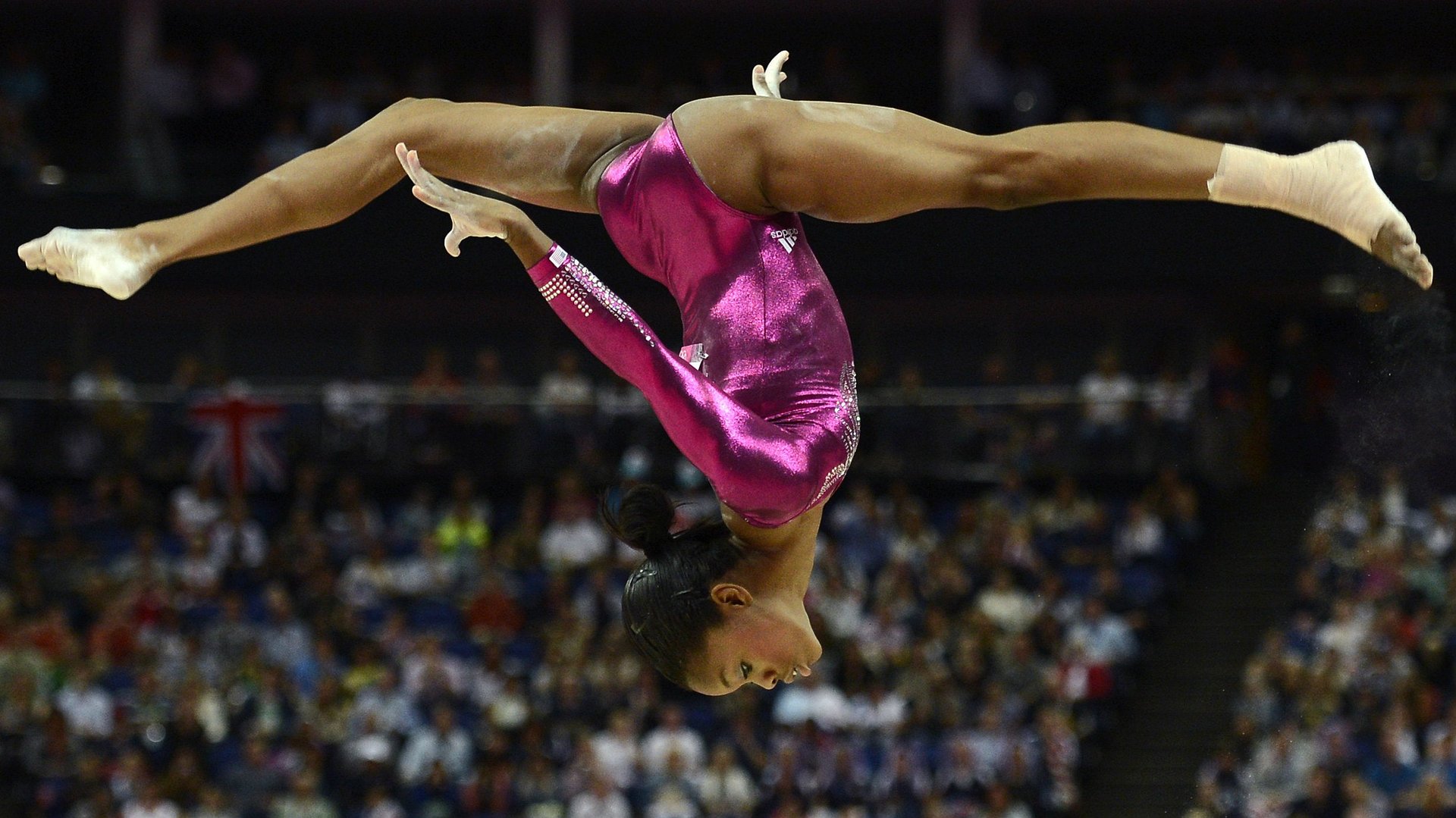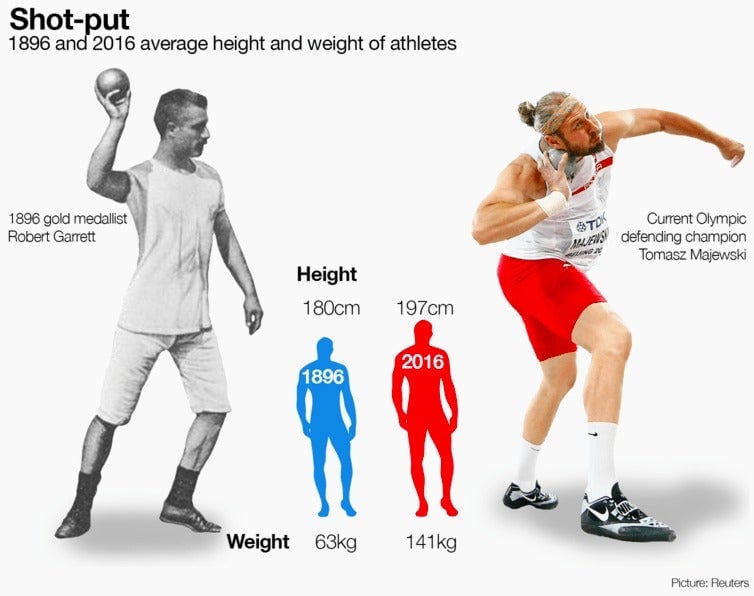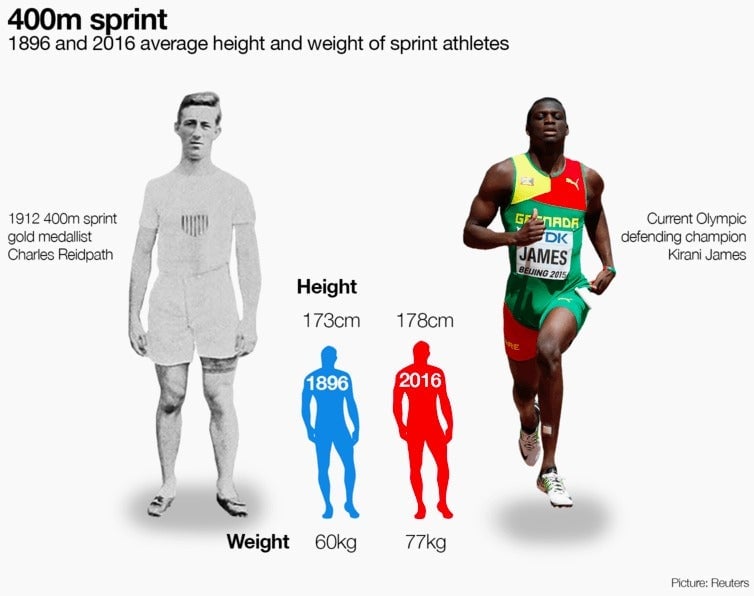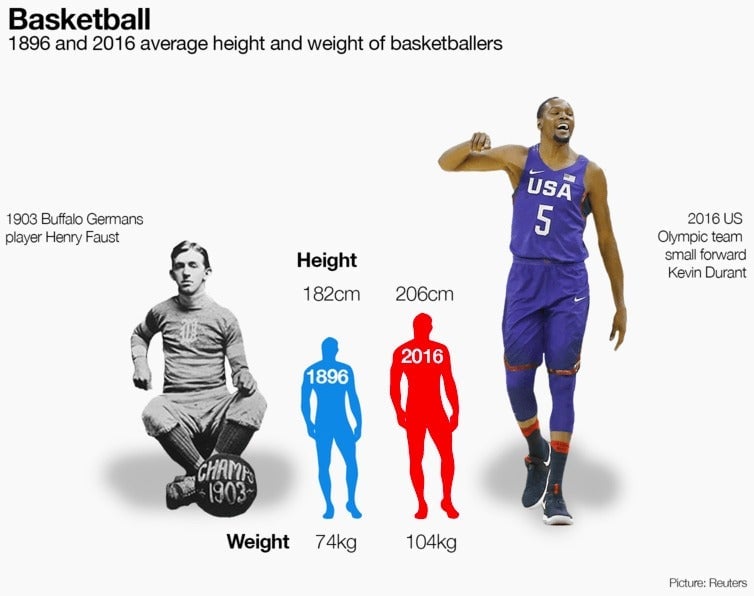The reasons why Olympians have developed extreme body types
Darwinian “survival of the fittest” means that the bodies of Olympic athletes are becoming more specialized, more differentiated—and much more extreme.


Darwinian “survival of the fittest” means that the bodies of Olympic athletes are becoming more specialized, more differentiated—and much more extreme.
The gold medal shot-putter from the 1896 Games, American Robert Garrett, weighed 81 kilograms (179 lb); the 2008 and 2012 champion, Poland’s Tomasz Majewski, weighed in at 142 kg.

Over a similar period, the weight of the 400-meter race champion barely changed. In 1912, American Charles Reidpath weighed 78 kg; 100 years later, Kirani James (Grenada) weighed 80 kg.

Like galaxies in our expanding universe, the body sizes and shapes of Olympians have been moving apart from each other at light-speed, and have become increasingly specialized and differentiated. A hundred years ago, the same person could have won both the shot-put and the 400-meter dash. Today, that’s unimaginable.
Excluding swimmers who have also played water polo (which count as different sports, but really require similar body shapes), 39 athletes have won medals in more than one sport at the Summer Games. Of these, 34 won their medals in the 60 years before 1956, leaving only five in the 60 years since.
In the early days of the Olympics, athletes won medals in exotic combinations of sports, such as athletics and tennis (Australian Teddy Flack in 1896), or shooting and weightlifting (Viggo Jensen, Denmark, 1896). These are akin to seeing Usain Bolt trying his hand at synchronized swimming, or Roger Federer on the Roman rings.
In some sports, athletes are just getting bigger and bigger. Filippo Bottino won gold for Italy in the open weightlifting at Antwerp in 1920, weighing 99 kg. In 2012, Iranian Behdad Salimi weighed 189 kg.
In other sports, body size and shape have barely changed. From 1896 to 2016, the average weight of elite marathoners has increased by just one kilogram—from 60 kg to 61 kg; and their height by only two centimeters—from 169 cm (5 ft 7 in) to 171 cm. It seems there is an ideal weight and height for this kind of athlete.
Divers, too, have hardly changed. Gymnasts have actually become smaller.
The search for size
Social, economic, and technological factors are all driving this expanding universe of sporting bodies, this “search for size.” For one thing, there are just more people in the world, and therefore more extreme bodies.
In 1896, it’s likely there would have been just one young man in Australia over two meters tall. Today, there are probably more than 3,000. People have got taller—we’re about 12 cm taller than we were at the time of the 1896 Athens Olympics—and the population has increased sevenfold.

The pool of potential sportspeople has been expanding even faster as sport has become globalized. The 231 cm basketballer Manute Bol was an illiterate Sudanese herdsman who had once killed a lion with his spear.
Better transport and telecommunications, more aggressive recruitment policies, and higher wages also help.
Between 1945 and 1980, elite American footballers earned between five and ten times the median male wage—nice work if you could get it. By 2000, they were earning 30 times the median wage.
If you’re 231 cm tall, you won’t be wasting your time studying accountancy. Or killing lions, for that matter.
But even the lure of huge amounts of money (last year the number one rookie pick in the NBA had a starting salary of $4.9 million) has its limits. The percentage of NBA players more than 213 cm (that’s seven feet) tall had increased from about 1% in the 1940s and 1950s to about 10% in the 1990s.
In 2002, 11% of all players were more than seven feet tall. But that percentage hasn’t increased for 20 years: the NBA has now recruited all the players in the world with exceptional height and at least some shred of basketball talent.
Artificial growth
At the same time, training and supplementation—nutritional and otherwise—has also changed Olympic bodies. In any suburban gym today, you’ll see bodies as muscular as the sprinters from the 1960 Rome Olympics shown in J.M. Tanner’s 1964 book, Physique of the Olympic Athlete.
Weight training, steroids, and human growth hormone have clearly played a role. Between 1920 and 1979, the body mass index (BMI, weight in kilograms divided by height in meters squared) of American footballers increased at the rate of 0.3 units per decade.
In the years since, it has increased at more than five times that rate—1.6 units per decade. It’s inconceivable for these increases to have been achieved without steroids.
Where, then, will it all end? Extraordinary bodies are highly salable commodities, and we’re unlikely to see the rapid demise of growth-modifying drugs or extreme training methods.
But the new frontiers of size may be genetic: there are already athlete sperm and egg banks, plans to use gene therapy to block the muscle growth inhibitor myostatin, and talk of cloning athletes. If that happens, the boundaries of the expanding universe of Olympic bodies will recede even further.